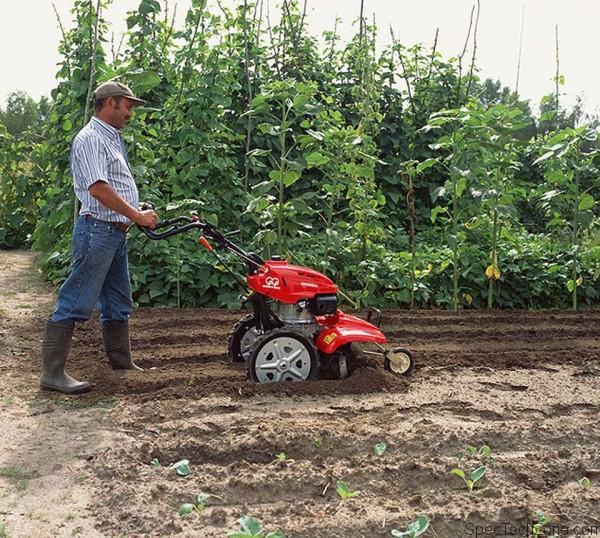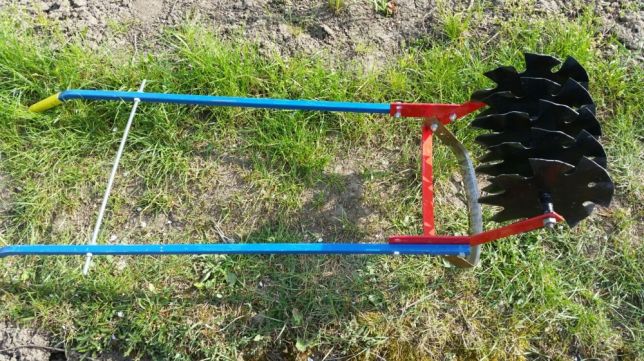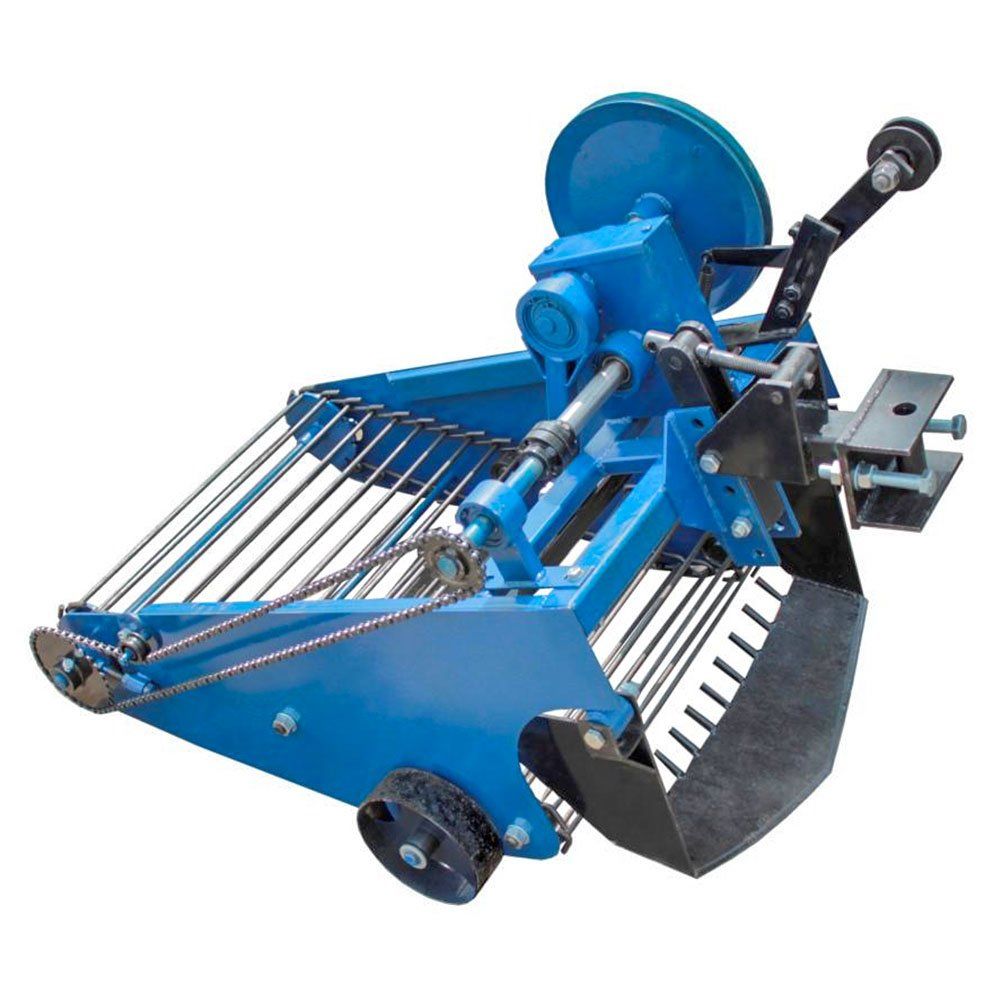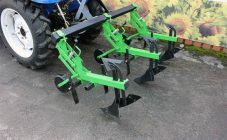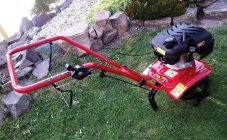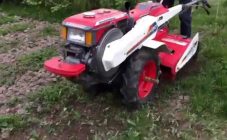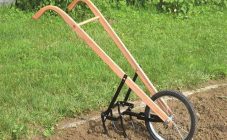Content:
Using a cultivator on a plot of land facilitates work and saves the gardener's time. With the help of special equipment, you can effortlessly process a large area of the site. The versatility of the cultivator allows you to use the unit for different types of work.
Description of the cultivator
The cultivator is a special garden tool. The tool prepares the soil for seeding and makes harvesting easier. The main tasks that the cultivator does:
- Plowing;
- Loosening the earth;
- Cutting furrows;
- Digging up the crop;
- Hilling;
- Possibility of leveling the plot with a cultivator;
- Weed root pruning, lawn treatment;
- Harrowing.
Cultivators are divided into 2 categories: automatic (motor-cultivators) and manual. Automatic cultivators are diesel and electric. The choice of tool depends on the type of work. Each species has several advantages.
Hand cultivators are designed for loosening the soil in hard-to-reach places. They are used in greenhouses, in small beds, flower beds. A mechanical cultivator gently cultivates the soil without damaging the plant. Benefits:
- Convenient operation;
- Inexpensive;
- Mobility;
- Takes up little space, compact;
- Does not need service maintenance.
The device is considered one of the simplest. It makes manual work easier, saves time, but it will take effort from the gardener to work with the tool to get a good result. Disadvantages of a manual cultivator for working in the country:
- Possibility of using in a small area;
- A cultivator for virgin lands, clayey lands will not work;
- Has low performance.
There is a large selection of light and mobile electric cultivators on the market. Advantages of universal rotary cultivators:
- Compact models;
- Performance and power are higher relative to manual fixtures;
- Works from the electrical network, does not harm the environment;
- Easy to use and maintain tool;
- The constructions are light, even women can work with them.
Electric cultivators have a number of disadvantages:
- Adaptation without attachments;
- The need to purchase a long carrier, since the tool works from the mains;
- The electric cord sometimes interferes when moving, carrying the cultivator; if you carelessly handle, you can hook the connected cord with the blades of the tool;
- The loosening depth is small.
The gasoline cultivator is considered the most versatile garden tool. Advantages:
- Possibility of processing a large area of land;
- Adjustment of soil cultivation depth;
- Powerful unit;
- There are additional attachments;
- It is convenient to move around the site with a cultivator, self-propelled unit.
By the type of built-in engine, there are battery cultivators. The main advantages of such units are regardless of power supply (electricity or gasoline) and mobility. After a full charge, they can work autonomously for a long time.
Which cultivator to choose depends on the purpose of use. If the plot is small and the soil is loose, you can purchase a hand cultivator. For convenient processing of a large area of land, a motor cultivator is suitable.The cultivator for the walk-behind tractor can be assembled independently, additionally using the necessary devices.
Types of cultivators by weight and power
The technical characteristics of cultivators depend on the type of device. The main components of a motor cultivator:
- Power unit (internal combustion engine or electric motor);
- Transmission (clutch type and gearbox);
- Chassis;
- Governing bodies.
On the market you can find cultivators that will differ not only in power, functionality, but also in weight. There are three weight categories:
- Lightweight. Most hand-held (Tornado model) and electric cultivators fall into this category. The weight of the device is 10-30 kg, the average power of the cultivator is 1.1-3 l / s. The tool is easy to use, but due to its low weight, the loosening depth is small. Such devices are designed for processing a vegetable garden with an area of up to 12 acres;
- Average. Some gasoline models weighing up to 90 kg are considered medium power cultivators. With their help, you can cultivate the soil to a depth of 28 cm, the average power is 6 l / s. The unit copes with the processing of heavy soils. It is possible to process plots of up to 20 acres (popular models - cultivator Huter 5 5, Hyundai, Carver, Centaur, Krot, Neva, Rusich, Salut, Tarpan);
- Heavy. Among the gasoline cultivators there are heavy ones. Weight exceeds 90 kg, power - more than 6 l / s. The unit processes any kind of soil. It is designed for a plot of 50 acres. Gasoline cultivators have additional attachments, which expand their functionality.
Additional functions of the cultivator
To choose the best option, when buying a cultivator, you must consider:
- Soil type on the site, relief features;
- The area to be plowed;
- Equipment power and performance;
- What types of work will need to be done;
- Physical capabilities of the user.
For convenience and ease of cultivation of the soil, cultivators are equipped with additional devices that expand the functionality of the unit. The following equipment is found:
- Plow - designed for plowing the land. Depending on its type, you can dump the soil on one or two sides. There are units with crow's feet;
- Cultivator hiller - cuts and hills furrows;
- Aerator (ripper) - loosens the soil, saturates it with oxygen;
- Potato digger - for harvesting potatoes;
- Mower - Cuts vegetation. The mower is of two types: rotary and knife. The second type is safer, suitable for processing in the aisle;
- Trolley, trailer - allows you to transport cargo weighing 200-500 kg;
- Rotary brush - used for cleaning the area from debris, in winter it is used as a snow removal device;
- Bulldozer knife - used for clearing soil, snow;
- Lugs - designed for reliable adhesion of the machine to the ground;
- Headlights - necessary for working in the dark;
- Wheels - facilitate the transport of the unit. Sometimes used as an additional fulcrum when moving. Such wheels are used only after the cultivator is running;
- Garden fences - prevent damage to the plant from falling under the cutter. The accessory is useful when processing in the aisle;
- Handle adjustment - the ability to adjust the height of the handle to your own height;
- Turning the handle. With the possibility of lateral rotation of the handle, the user controls the cultivator from the side. This prevents the cultivated soil from being trampled.
Recommendations for choosing a motor cultivator
When choosing a cultivator (manual, disc, automatic), it is recommended to consider:
- Appointment.If the area of the plot does not exceed 25 acres, then you can choose a conventional manual or electric cultivator. For large areas and complex work, a walk-behind tractor will be the best solution;
- Appearance. When buying, carefully examine the equipment for defects (scuffs, deformations, streaks, chips, cracks). There should be no visible flaws;
- Brand. The cost of the equipment depends on the manufacturer. High-quality equipment with reliable assembly has an appropriate price. By purchasing a branded product, the client has the opportunity to receive free service, a guarantee is issued for the product;
- Serviceability. Be sure to check the equipment in the store for the functioning of components and assemblies. The motor should start and run easily, the shafts should rotate. The throttle and clutch cables should move easily. The presence of creases and scuffs is not allowed;
- Build quality. During visual inspection, pay attention to the fastening of bolts and nuts. There should be no unwound or loose parts. When you turn on the device, all components should work and move without squeaking and jerking;
- Documents. A quality product must be certified, it must have a technological passport and instructions;
- Individual characteristics. If the cultivator is purchased for personal use, then you need to evaluate your own physical capabilities. Women and teenagers will not be able to work with heavy machines.
Service and repair of the cultivator
Cultivators can be checked and serviced at specialized service centers. The maintenance of cultivators consists of:
- Complete diagnostics of all components and mechanisms of the device;
- Determination of a faulty part or assembly in the operation of the unit;
- Carrying out repair work with the replacement of individual parts or the restoration of native spare parts, if possible;
- As a result of the repair work carried out, the equipment fully restores its performance;
- Cultivator testing, spare parts lubrication.
At home, you can carry out self-diagnosis and troubleshooting of individual mechanisms, if you know where the problem is. If you understand the device, you can determine the breakdown. Components of the cultivator, possible malfunctions, preventive and remedial measures:
- Frame. The most reliable part of the unit. After each use of the equipment, it must be cleaned of residues of earth and stones. With frequent contact with stones, breakage is possible;
- Reducer. The gearbox contains oily lubricants. It is important to ensure that the oil does not drip. For this, all bolted connections must be securely fastened. The oil should be changed every six months;
- Engine. The main part of the cultivator. The fuel, ignition, cooling system, lubrication systems must be periodically checked;
- Pens. The handles have special rubberized pads for the convenience of the user. Over time, they wear out, wear off. Therefore, they must be replaced with new ones or wrapped with electrical tape. If your hands slide, it will be difficult to control the unit;
- Cable. Before work, the cable is checked for the integrity and reliability of the connection. If the cultivator is constantly working in wet soil or in places of moisture, then the cable loses its original ability to move in a sheath.
The cultivator is a reliable assistant in the matter of land cultivation. Taking a serious approach to the choice of a model, having studied which cultivator is better, the main characteristics in the equipment data sheet, the buyer will be satisfied with his choice. Knowing the features of the device, the main points on the device of the unit, you can independently monitor the health of the cultivator, then it will last for years.
